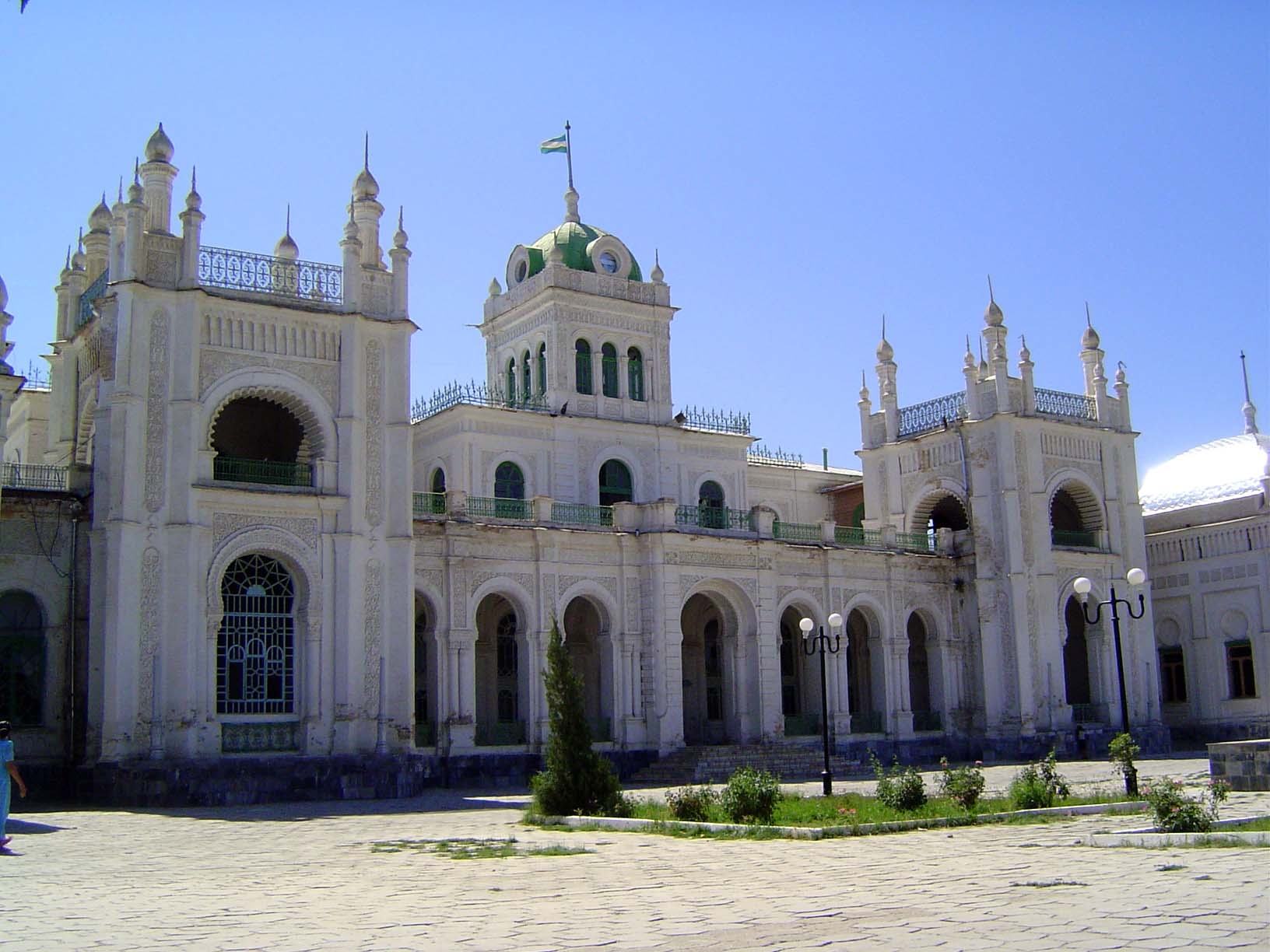
In 1887 the Central Asian Railway opened a station at Kagan, or New Bukhara. Call it Globalization Knocks.
Between Bukhara and New Bukhara the Emir Abdul Ahad in 1895 built a palace in anticipation of a royal visit that never happened. The architect was Alexei Benois, who also designed the Romanov mansion in Tashkent.
The Palace That Never Was is a fusion of architectural styles from the East and West. Here's the entrance hall built for the czar.
The walls are decorated with paintings of European Russia.
There's a ball-room, too, though the floor, stage, and ceiling are all Soviet-era modifications.
The other end of the building is in a completely different style.
Here's the emir's entrance.
The emir's office.
The building has had various incarnations since 1920, mostly as the property of the railway administration. Perhaps that explains the spartan furnishings.
Which style dominates? The local wins on trim, but the nuts and bolts are imported.
A more modest case of Russification, here's the iconostasis of the Orthodox church in Kagan.
More recently, Bukhara has filled up with Soviet-era housing. The city has four new housing areas or rayons, each built for 40,000 people. Each of the four is composed of four microrayons, of 10,000 people each. And—you can guess—each microrayon is composed of four large apartment buildings. Since the breakup of the U.S.S.R., the apartments have been sold to their occupants.
Another example of Soviet-era housing.
Salaries are very low: a young university graduate working as an examiner for the Central Bank is considered well off with a monthly salary of $70. That's more than twice the minimum wage for government workers. Still, free markets make rich people, and on the outskirts of town a car dealer has built himself this palace.